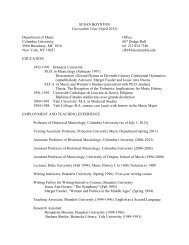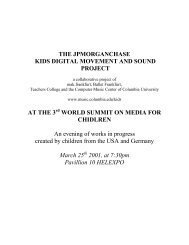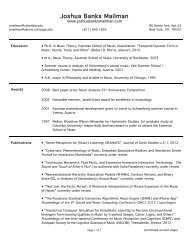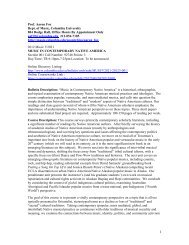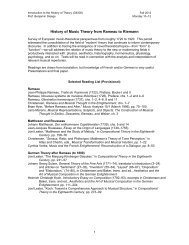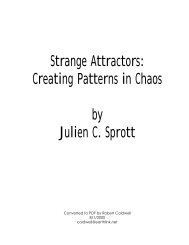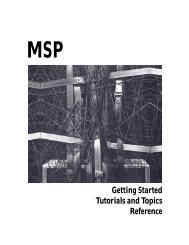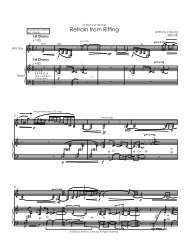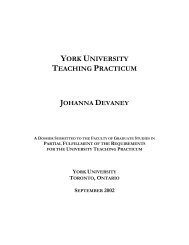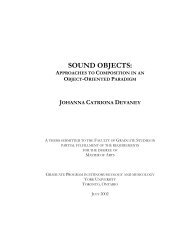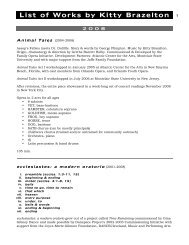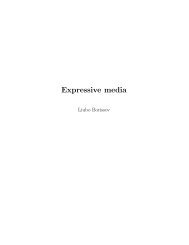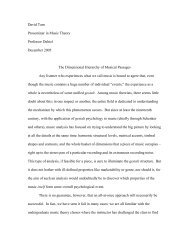Text, including the two scores - Columbia University Department of ...
Text, including the two scores - Columbia University Department of ...
Text, including the two scores - Columbia University Department of ...
Create successful ePaper yourself
Turn your PDF publications into a flip-book with our unique Google optimized e-Paper software.
portions <strong>of</strong> a shape are hidden behind o<strong>the</strong>r shapes, and doesn’t render <strong>the</strong>m; since we need to see all <strong>of</strong> both objects piled on top <strong>of</strong> one ano<strong>the</strong>r, this must not happen, or else one <strong>of</strong> <strong>the</strong> shapes will be incomplete. The preceding description (<strong>of</strong> rendering <strong>two</strong> instances <strong>of</strong> each desired what<br />
was my method for a long time, but at that phase <strong>of</strong> development it had <strong>two</strong> major drawbacks. One was <strong>the</strong> impossibility <strong>of</strong> negative separation. Given <strong>the</strong> constant x-coordinate separation, <strong>the</strong> <strong>two</strong> shapes will always be positively separated, and only as <strong>the</strong>y approach an infinite distance would <strong>the</strong>y be shapes<br />
as a unison shape at zero separation. I tried several techniques to introduce <strong>the</strong> possibility <strong>of</strong> negative separation: one included doing a vertex- perceived<br />
distance computation, ano<strong>the</strong>r involved skewing shapes to more accurately represent <strong>the</strong> different viewpoints <strong>of</strong> <strong>two</strong> eyes. Both <strong>of</strong> <strong>the</strong>se were too computationally intensive to be useful, but <strong>the</strong> latter strategy led to <strong>the</strong> eventual solution. The second drawback was <strong>the</strong> problem <strong>of</strong> border violations; by-vertex<br />
keep <strong>the</strong> content matched between red and blue versions, clipping planes would have to be used (to truncate <strong>the</strong> vertices that fall beyond <strong>the</strong> edge <strong>of</strong> that plane). With different clipping planes for red and blue, this meant that clipping planes would have had to be repeatedly enabled and disabled within each to<br />
which is both algorithmically cumbersome and computationally inefficient. A solution was needed that would somehow remove <strong>the</strong> necessity <strong>of</strong> frame,<br />
sets <strong>of</strong> clipping planes for red and blue content. The solution to both <strong>the</strong> above problems turned out to be vastly more elegant and simpler to implement and compute; it also yields a more realistic and believable 3D result. Instead <strong>of</strong> creating <strong>two</strong> copies <strong>of</strong> a shape side by side,<br />
separate<br />
18



